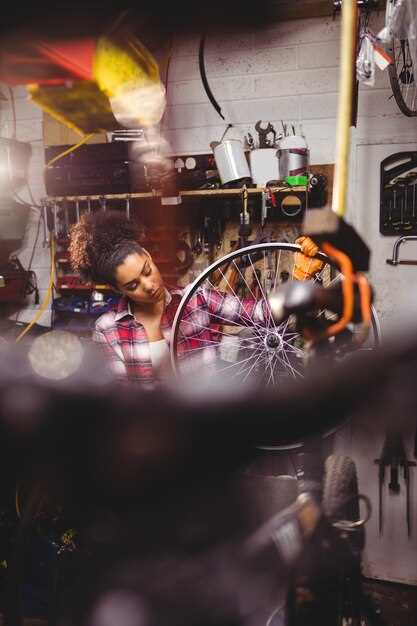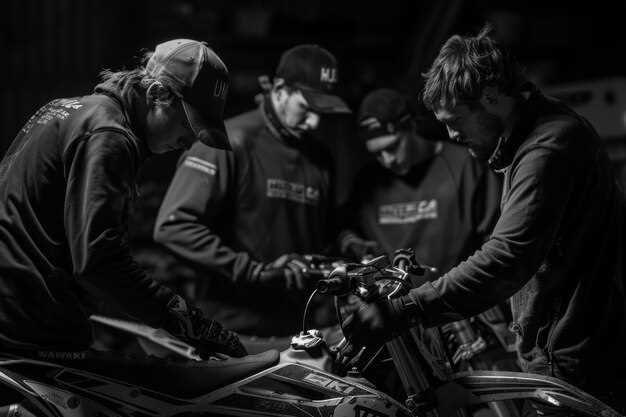
To truly appreciate the intensity and precision of motorsport, one must understand the critical role of the pit crew. This dedicated group operates in the shadows, yet their impact is profoundly felt on race day. In this article, we take you behind the scenes to reveal a day in the life of our pit crew, a team whose every move is a finely tuned element of a well-oiled machine.
The pit crew is the heartbeat of any racing team. Their responsibilities extend far beyond mere tire changes; they are a cohesive unit that embodies discipline, strategy, and teamwork. Throughout our journey, we will explore the preparation and training that each crew member undergoes, showcasing their extraordinary skills that often make the difference between victory and defeat.
Join us as we delve into the meticulous planning and split-second decisions that define a successful pit stop. From the early morning briefings to the adrenaline-fueled chaos during a race, we will highlight the tireless effort, unwavering focus, and sheer dedication of our pit crew. Their commitment is not just about speed; it’s about precision and the relentless pursuit of excellence that drives our team forward.
Understanding the Roles of Each Team Member in the Pit Stop

In motorsport, the efficiency and precision of a pit stop can greatly impact the race outcome. Each team member plays a critical role in ensuring that the car returns to the track as quickly as possible. Understanding these roles is essential for appreciating the teamwork involved in a successful pit stop.
The crew chief oversees the entire operation, managing strategy and timing. This individual communicates with the driver and makes quick decisions based on the race’s progress, ensuring that the team is prepared for various scenarios during a pit stop.
The tire changers are responsible for removing the old tires and installing new ones. This role requires speed and coordination, as the tire changers work simultaneously on all four tires. Proper technique helps minimize the time spent in the pit, allowing the car to get back on the track faster.
Next are the fuelers, who handle the fueling of the car during the stop. This task demands precision and careful handling of fuel equipment to avoid spills and ensure the tank is filled efficiently. Fuelers must also be aware of any potential hazards associated with fueling under pressure.
The jack operators lift the car off the ground to allow for tire changes and, in some cases, repairs. Their timing must be flawless, as the jack must engage and disengage at the right moments to prevent delays. Understanding the weight distribution of the car is also crucial for safe operation.
Additionally, the mechanics are on standby to address any potential car issues that may arise during the pit stop, such as minor adjustments or repairs. Their knowledge of the vehicle’s mechanics is essential for quick fixes that can make a significant difference in performance.
Finally, the wingmen and crew members support various aspects of the pit stop by handling equipment, managing tools, or assisting in keeping the area clear for operations. Each role, though sometimes less visible, contributes to the overall success of the pit stop, showcasing the importance of seamless teamwork.
In summary, the effectiveness of a pit stop hinges on the collaboration among team members. Each individual’s expertise and swift execution of their responsibilities are vital for maximizing performance during a race.
Key Tools and Equipment Used During Race Day Operations
Race day operations rely heavily on a variety of specialized tools and equipment to ensure efficiency, safety, and optimal performance. Understanding these tools helps appreciate the intricacies of pit crew responsibilities and race strategies.
One of the most critical tools is the pneumatic tire gun, a high-powered device used for quickly tightening and loosening lug nuts during tire changes. This tool drastically reduces the time needed for each pit stop, as every second counts in competitive racing.
Another key piece of equipment is the tire pressure gauge. Proper tire pressure is vital for vehicle performance and safety. The crew monitors and adjusts tire pressure before and during the race to ensure optimal contact with the track.
The fuel canister, specifically designed for rapid refueling, plays a crucial role as well. These lightweight, strategically engineered cans allow for quick fuel transfers under pressure while minimizing the risk of spills and fire hazards.
Additionally, the data acquisition system is essential for gathering real-time performance metrics. This technology analyzes data from the vehicle, helping engineers and the crew make strategic decisions about tire choices, pit timing, and vehicle adjustments based on track conditions.
Communication tools, including headsets and radios, ensure seamless coordination among team members during the race. Effective communication enables quick reactions to changing conditions on the track and supports the execution of the race strategy.
Moreover, various hand tools, such as wrenches, screwdrivers, and impact sockets, are indispensable for making quick repairs and adjustments. The crew needs to be expertly trained in using these tools to handle any unexpected issues that may arise during the race.
Finally, safety equipment, such as fire extinguishers and first aid kits, is always on standby. The pit crew prioritizes safety to protect team members and drivers, ensuring that they are prepared for emergencies at a moment’s notice.
Timelines and Strategies for a Successful Pit Stop Execution

The foundation of an effective pit stop lies in meticulous planning and coordination, ensuring that every second counts. A well-structured timeline is crucial, with each team member aware of their role and responsibilities. Typically, a pit stop can be broken down into key phases: preparation, execution, and post-stop assessment, each requiring specific strategies to maximize efficiency.
Preparation starts well before the car enters the pit. This phase includes pre-race meetings where team roles are defined, equipment is checked, and strategies are developed based on track conditions and potential race scenarios. Teams must practice pit stops multiple times during the lead-up to the race, honing their skills to achieve optimal timing and coordination.
During the execution phase, timing is paramount. As the car approaches the pit, the crew must initiate the stop procedures immediately. The tire changers and fuelers should work in unison, with clear signals indicating when to commence their tasks. Utilizing specialized tools and equipment speeds up the process, reducing the time spent in the pit. A well-coordinated team can execute a tire change in under three seconds, showcasing the importance of teamwork and precision.
Post-stop assessment is often an overlooked aspect but is crucial for continuous improvement. After each pit stop, teams should analyze their performance, focusing on time taken for each action and identifying any delays. Regular feedback sessions will reinforce best practices and help develop strategies for future races. Additionally, maintaining clear communication among team members during the race will provide insights into what works and what needs adjustment.
Implementing these timelines and strategies ensures not just faster pit stops but also enhances overall race performance. With proper execution, teams can minimize errors and optimize their chances of a successful race outcome.

